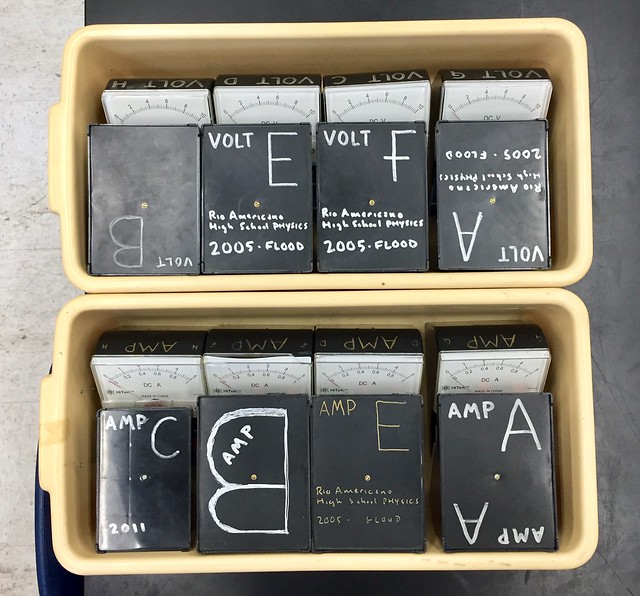I have had the good fortune of securing funds for considerable capital outlays for quality physics demonstration and laboratory equipment over the years. Rio's School Improvement, Gifted And Talented Education, Parent Teacher Association, and Science Boosters programs have funded a variety of my requests. It's been a patient siege, but in due time, the classroom was well-stocked for my needs.
When I did my student teaching at Ann Arbor Huron High, there was a physics equipment storage room the size of a regular classroom with rows of shelves: it was essentially an apparatus library. When I was a student in a physics class at Grand Rapids Central High, there was a classroom and a lab room. At Rio I have my classroom and share a tiny storage room with a neighbor. So what I get has to fit in a small, fixed amount of space.
Here are a couple of storage solutions I've adopted and continue to appreciate. Now that I teach four different physics courses, I often need to haul out or store materials in the wee breaks between classes. Half-gallon milk cartons, small utility tubs, and removable drawer storage are leveraged throughout the classroom.
The analog current and voltmeters stack nicely into the tubs and the tubs fit nicely into the drawers.
Brass masses and mass hangers store nicely into strategically cut milk carts, and the milk cartons fit into the tubs. As do sets of disparate clamps.

Flip a couple of the milk cartons for convenient tub stacking. There is no tubthumping.
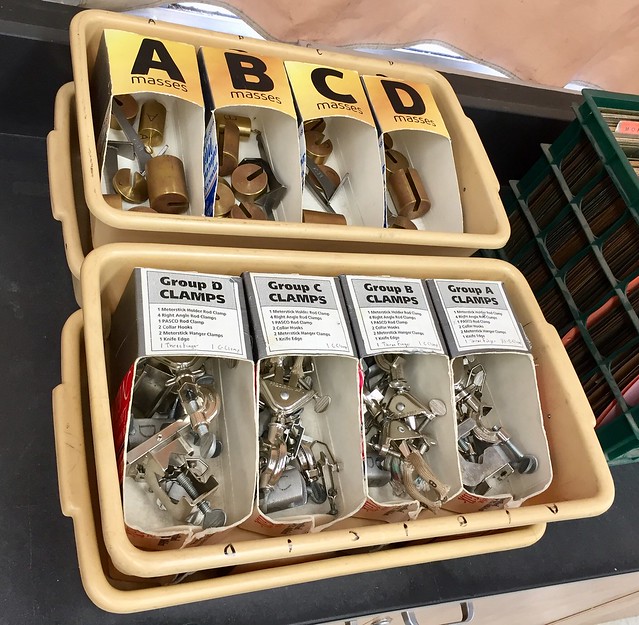
When the classroom was "modernized" in 2000, two storage cabinets were added. And promptly filled.


I'm an unapologetic fan of removable drawer storage racks of all sizes.
Here are photos of lab sets of correlated items:
Dynamics carts
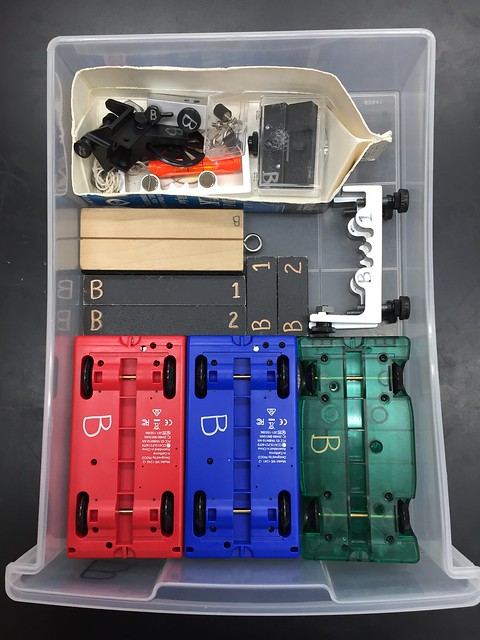
After students have used the materials and it's time for clean-up, it helps to have a photograph of how the drawer should look when restored to its low-entropy status. Lay it on top when storing the drawer. I printed this latest edition (with the new Smart Carts) on heavy card stock.
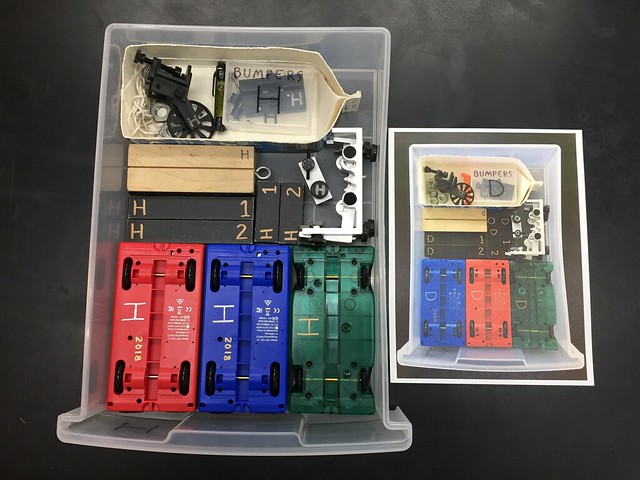
Circuits (batteries, bulbs, wires, switches, power resistors, capacitors, magnetic battery connectors)
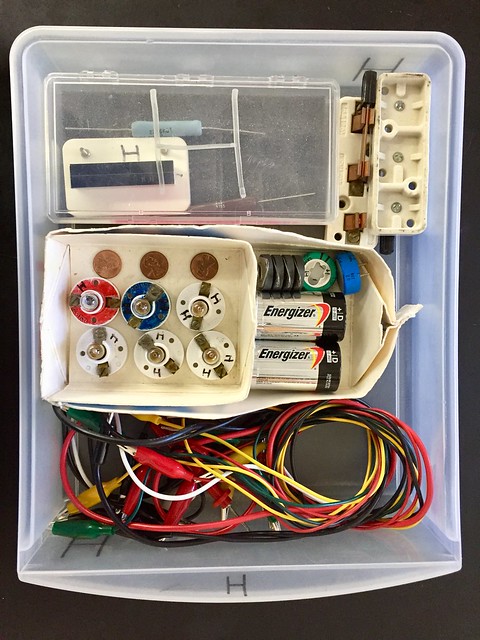
Magnetism (bar magnets, compasses, wires, lead-free solder, ignitor battery, rod clamp, collar hooks, wood dowel, Ampere's Law apparatus, Genecon)

Wave Optics (CD, whiteboard markers, binder clamps, diffraction gratings, laser tripod)
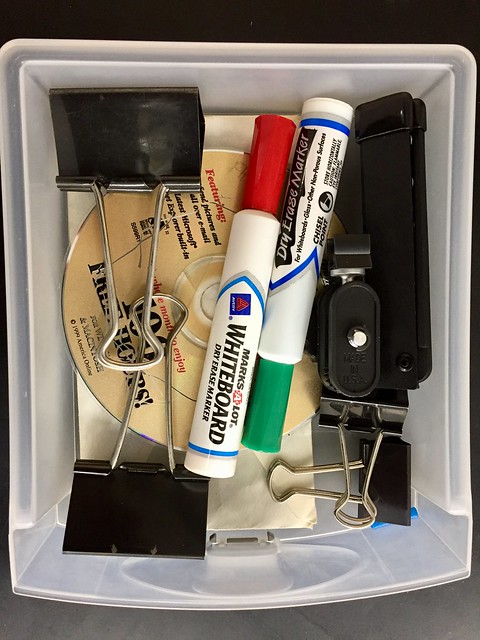
Clickers (each group is assigned four: e.g., Group E: E1, E2, E3, E4)
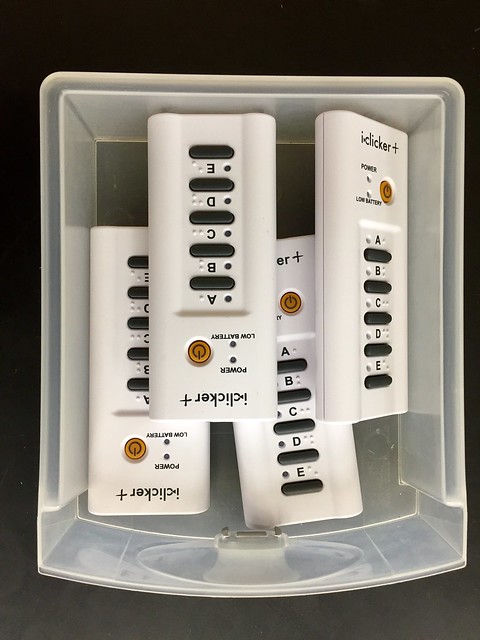
The plastic removable drawers are also nice for storing class sets of a particular item, like force sensors.
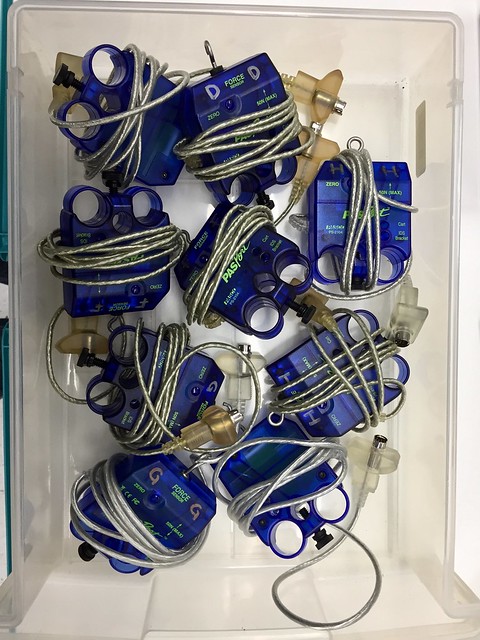
On the off chance that I've left you with the sense that I'm a fastidious neat-nick, I assure you that the rest of my classroom (and much of my humble abode) are ongoing celebrations of disorder.
